Sony Xperia 1 VI vs iPhone 15 Pro Max: Can Xperia challenge the iPhone?
We may earn a commission if you make a purchase from the links on this page.
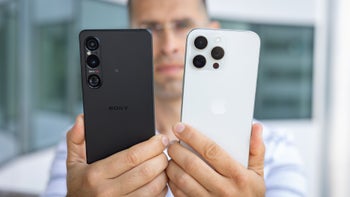
Intro
Sony ruffled some feathers with the official announcement of the Xperia 1 VI on May 15, 2024. The phone drops two of Xperia's most iconic features: the 4K screen and the 21:9 aspect ratio. The Japanese company hopes that by doing this, it will cater to a wider audience, and maybe, just maybe, some people will buy the Xperia 1 VI instead of, let's say, the iPhone 15 Pro Max.
Today, we're going to explore this idea in detail. Is the Xperia 1 VI properly equipped to take on the iPhone 15 Pro Max? What are the main differences between the two phones? And which one should you buy? To find answers to these pressing questions, read on!
UPDATE: The iPhone 16 series has landed and there are new competitors on the stage. If you want to see how the new Apple flagships fare against the competition, check out some of the comparisons below:
- Samsung Galaxy S25 Ultra vs iPhone 16 Pro Max: The best phones right now
- OnePlus 13 vs iPhone 16 Pro Max: David vs Goliath
- ROG Phone 9 Pro vs iPhone 16 Pro Max: 3 nm in the right direction
- iPhone 16e vs iPhone 16
Xperia 1 VI vs iPhone 15 Pro Max differences:
| Xperia 1 VI | iPhone 15 Pro Max |
|---|---|
| 6.5-inches, FHD+ resolution, LTPO screen with 1-120Hz refresh rate | Bigger screen with a higher resolution, same 1-120Hz dynamic refresh rate |
| New 19.5:9 aspect ratio, top and bottom bezels still present | Almost no bezels around the screen but Dynamic Island spoils it |
| New zoom capabilities on the periscope camera, it can now do 85-170mm | Telephoto camera has only 5x zoom |
| The latest Qualcomm Snapdragon 8 Gen 3 onboard | The latest Apple A17 Pro chipset |
| New camera app, housing all the pro-grade creator's software | iOS 17 with its usual pros and cons |
| Bigger battery, two days battery life advertised | Smaller battery |
Table of Contents:
Read more:
Design and Size
Bezel vs island
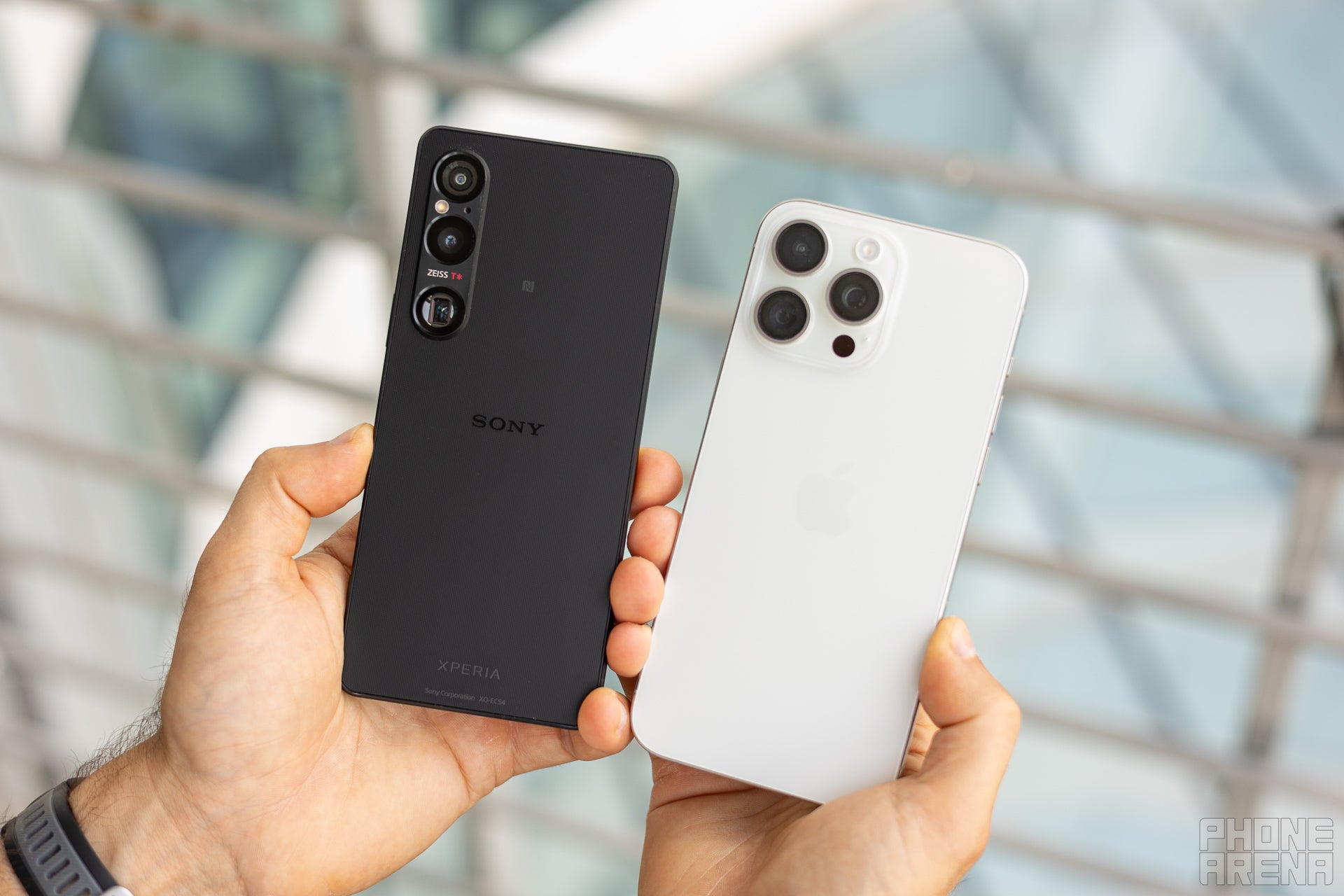
The Xperia 1 VI is still narrower than the iPhone 15 Pro Max (Image by PhoneArena)
These two animals are radically different when you put them side by side, no matter the new and more mainstream aspect ratio of the Xperia 1 VI. This phone looks like a Sony, and it retains the top and bottom bezels around the screen instead of going for a notch or a cutout.
The iPhone 15 Pro Max, on the other hand, employs the so-called Dynamic Island, which is just a pill-shaped cutout with some fancy software on top to mask it from time to time.
The camera bumps on both phones are also radically different. The Xperia follows in the footsteps of a long line of vertically positioned, elongated camera systems, while the iPhone uses a squarish design.
The iPhone 15 Pro Max, on the other hand, employs the so-called Dynamic Island, which is just a pill-shaped cutout with some fancy software on top to mask it from time to time.
The camera bumps on both phones are also radically different. The Xperia follows in the footsteps of a long line of vertically positioned, elongated camera systems, while the iPhone uses a squarish design.
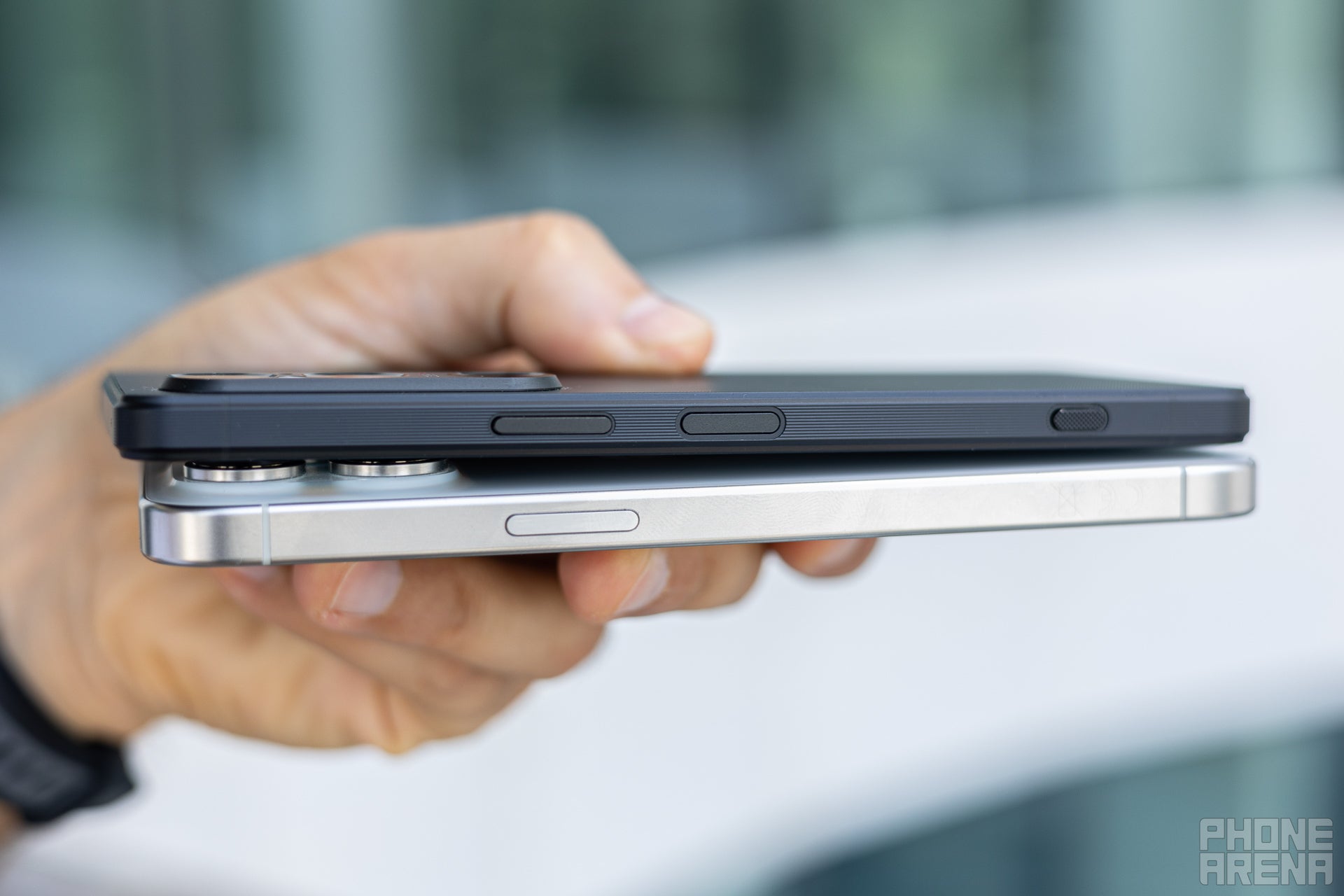
You can see the huge camera bump of the iPhone here (Image by PhoneArena)
When it comes to materials, there are differences again. The iPhone 15 Pro Max comes with a titanium frame, while the Xperia 1 VI uses aluminum. Even though both phones use glass, they feel different in the hand because Sony does this texture thing with the Gorilla Glass Armor.
Size-wise, the iPhone is still shorter and wider than the Sony by around two millimeters, but it's also 30 grams heavier.
Display Differences
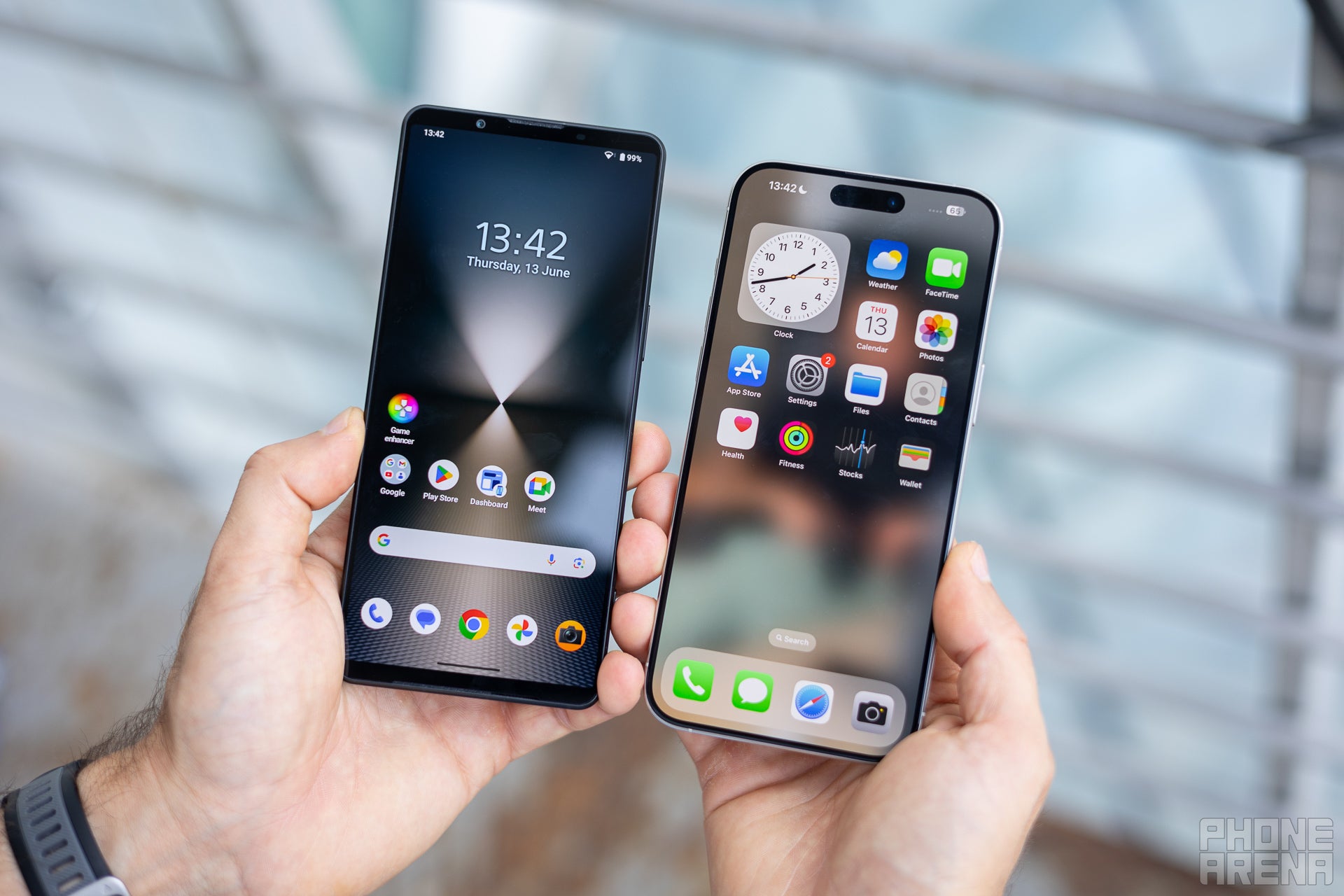
Sony took a leap of faith with the screen downgrade (Image by PhoneArena)
Here comes the big one. The Xperia 1 VI sports a 6.5-inch OLED display with FHD+ resolution (1080×2340) and a flexible refresh rate ranging from 1 to 120Hz. This offers around 396 PPI, which isn't the best pixel density for a flagship phone. The aspect ratio is now 19.5:9, similar to what you find in many modern premium phones, including the iPhone 15 Pro Max.
Speaking of the iPhone, it comes with a bigger screen at 6.7 inches and also has higher resolution and pixel density—2796 x 1290 and 460 PPI, respectively. It's not a huge difference, but some eagle-eye users out there might be able to spot it.
Speaking of the iPhone, it comes with a bigger screen at 6.7 inches and also has higher resolution and pixel density—2796 x 1290 and 460 PPI, respectively. It's not a huge difference, but some eagle-eye users out there might be able to spot it.
Display Benchmarks:
In terms of brightness, Sony claims that the Xperia 1 VI is 50% brighter than its predecessor, and indeed, the new phone scored almost 1,500 nits in our test. The iPhone 15 Pro Max has 2,000 nits of advertised peak brightness (we measured 1100), so it loses on the brightness front. It's worth noting that in reality, both phones are perfectly legible under direct sunlight, so you shouldn't read too much into brightness figures over 1000. In terms of color accuracy, temperature, and minimum brightness, these two are pretty closely matched.
When it comes to biometrics, these two use different methods of making sure it's you using the phone. The Xperia 1 VI uses a side-mounted capacitive fingerprint scanner, while the iPhone relies on the Face ID system. The Xperia used to have some gremlins inside the fingerprint sensor but in this new model it works as intended. On the other hand, we all know how good Apple's Face ID is, so it's up to you to choose the system that suits you best.
Performance and Software
Snapdragon is catching up
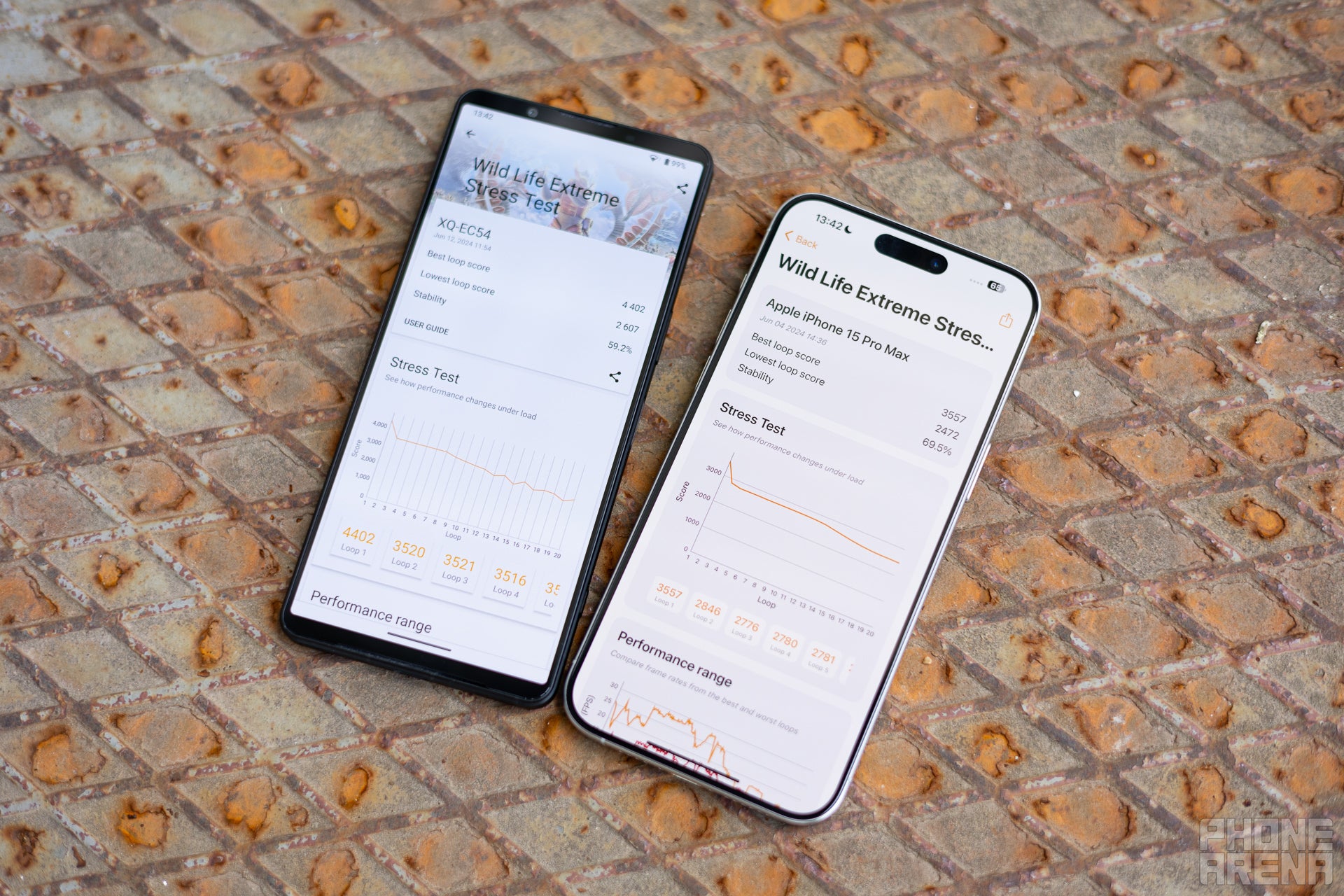
Synthetic benchmark scores are getting close between Apple and Qualcomm (Image by PhoneArena)
The usual caveats when comparing Android and iOS phones apply here. The Xperia 1 VI uses Qualcomm's latest Snapdragon 8 Gen 3 chipset, while the iPhone comes with an A17 Pro chip inside. Not only are these two different, but the way Android and iOS handle apps and tasks is also not the same.
That being said, synthetic benchmark scores are getting closer and closer between the two hardware platforms, with the A17 still owning the single core performance tests. In reality, you shouldn't expect any perceivable difference, as these two are flagship phones and work as smoothly as it gets.
The Xperia has more RAM, but we all know that this is not exactly relevant due to the different philosophy behind the ecosystem, the app optimization, and other things like that. The Sony phone also comes with a vapor chamber cooling for the first time, so this should alleviate any overheating issues.
The software side of things is more similar than different, believe it or not. While other big companies (Samsung, Google) are going all guns blazing with AI, Apple is biding its time, and the iOS experience is rather vanilla in that regard. The Xperia uses Sony AI to help with image processing and photography in general (exposure, white balance, and focus), but it's far from comprehensive AI systems such as Gemini or Galaxy AI.
One more important and pressing subject concerns the software support. Xperia phones used to lag behind big time in the past with only two major OS updates, while iPhones offer at least five. The new Xperia 1 VI comes with three years of OS updates and four years of security patches. It's not the best out there, but it's an improvement.
One more important and pressing subject concerns the software support. Xperia phones used to lag behind big time in the past with only two major OS updates, while iPhones offer at least five. The new Xperia 1 VI comes with three years of OS updates and four years of security patches. It's not the best out there, but it's an improvement.
Camera
To zoom or to zoom more?
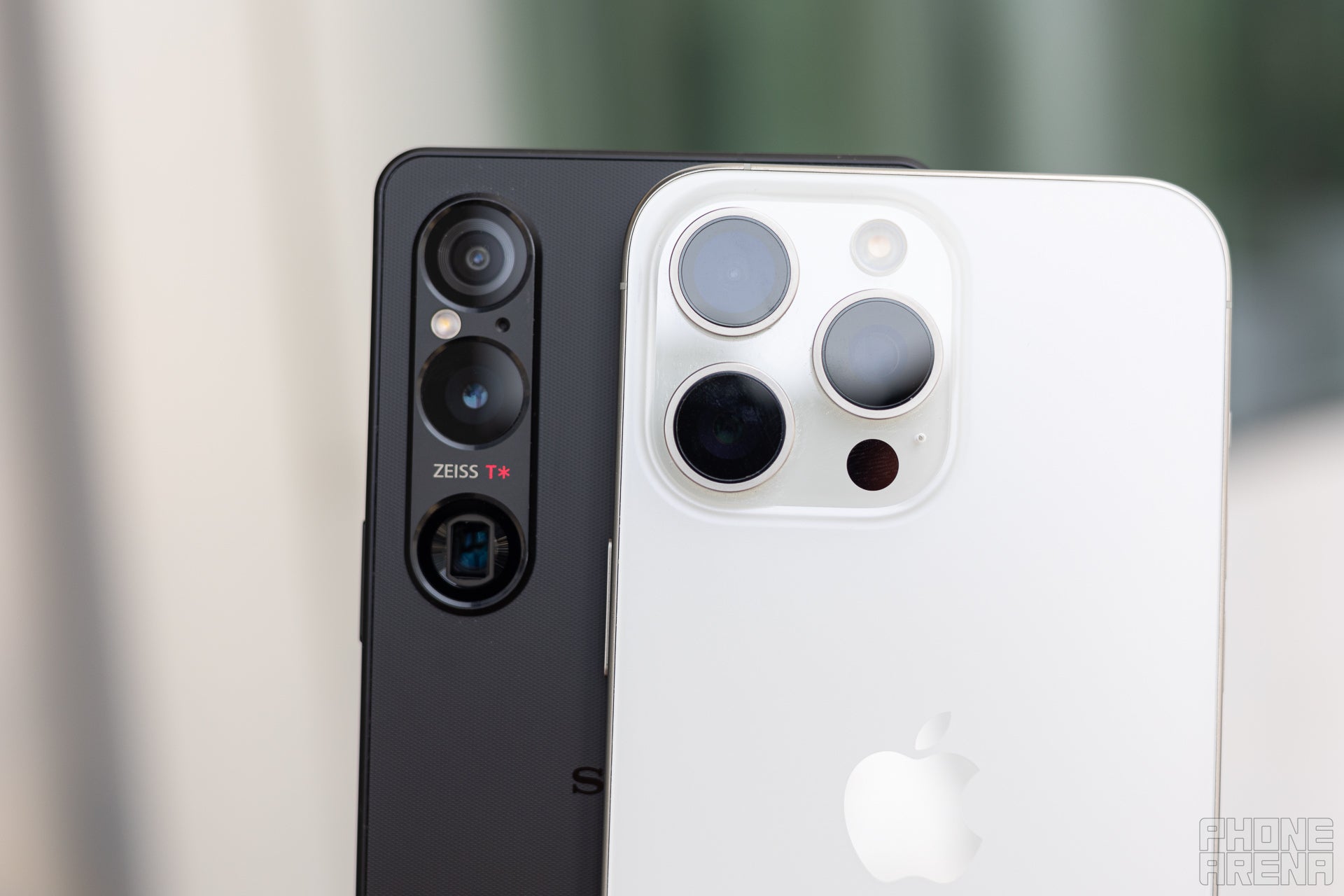
The Xperia 1 VI comes with continuous zoom, but do we really need one? (Image by PhoneArena)
Sony pioneered the continuous zoom smartphone camera with the Xperia 1 Mark III, and since then, the company has been ironing out the kinks and perfecting the concept. The latest model comes with a huge telephoto range (for a smartphone); it's the equivalent of an 85–170mm vario objective lens, or compared to the main camera, in absolute magnification, it's 3.5x–7.1x.
The iPhone 15 Pro Max, on the other hand, has a fixed focal length telephoto camera with 5x optical zoom, so on paper, the Sony is unique and much more flexible when it comes to zoom shots. Sony also boasts a new telephoto macro mode with 4cm closeups, but we have to test all this to see what's what.
The main and ultrawide cameras are quite similar, specs-wise. It's not a secret that Apple uses Sony sensors for its iPhone models, so there's a good chance we're talking about very similar hardware here. What's more important nowadays with smartphone photography is post-processing algorithms.
Xperia phones used to produce very natural and close-to-reality shots, but with the Mark V generation, the algorithms have changed, probably to please all the people who want a bit more pop in the color department.
The iPhone 15 Pro Max, on the other hand, has a fixed focal length telephoto camera with 5x optical zoom, so on paper, the Sony is unique and much more flexible when it comes to zoom shots. Sony also boasts a new telephoto macro mode with 4cm closeups, but we have to test all this to see what's what.
The main and ultrawide cameras are quite similar, specs-wise. It's not a secret that Apple uses Sony sensors for its iPhone models, so there's a good chance we're talking about very similar hardware here. What's more important nowadays with smartphone photography is post-processing algorithms.
Main Camera
We find the images taken with the iPhone a bit more detailed, and the dynamic range is also slightly better. This doesn't mean that Xperia 1 VI samples are bad, they are pretty decent but slightly lacking when put next to the ones taken with the iPhone.
In low-light conditions, the Xperia produces more natural photos, while the iPhone tends to add this yellow-green tint—a warmer tonality we're pretty familiar with and one that is present on all iPhones of late.
Zoom Quality
The zoom comparison is a bit tricky, because of the different focal lengths. At 3x and 3.5x the resolved details seem similar, and the differences in tone are apparent as well. The image from the iPhone may look subjectively better to people who like warmer photos.
7.1x vs 5x
7.1x is the longer end of Xperia 1 VI's continuous zoom system, and the iPhone 15 Pro Max tops at 5x optical. These two are hard to compare, but we can say they are similar in quality, while the Xperia provides higher magnification.
10x
10x is where things get digital and where post-processing algorithms rule. The sample from the Sony phone looks really impressive, with good exposure and detail. The iPhone shot, on the other hand, looks a bit washed out and probably not as sharp. Is this due to the Sony AI working behind the scenes? We can't tell.
Ultra-wide Camera
Here, the ultrawide sample taken with the Xperia 1 VI looks very warm, almost as if a sepia filter has been applied. The iPhone image, on the other hand, looks more natural and more detailed as well.
Selfies
The selfie image from the Xperia 1 VI looks good, but in comparison to the iPhone, it's a bit too bright and maybe a tad overexposed. There's a nice natural bokeh effect, but on the other hand, the iPhone photo looks sharper and has more detail in it.
Video Quality

Here's a quick video comparison between the Xperia 1 VI and the iPhone 15 Pro Max. Which one do you like better?
Audio Quality and Haptics
The audio quality and haptics of the late Pro Max generations have been exceptional. That being said, the Xperia 1 VI comes with front-firing stereo speakers, which is always a plus when you watch videos or play games on the phone. Furthermore, the Xperia 1 VI retains the 3.5mm audio jack, allowing users to plug in their favorite high-end wired headphones.
When it comes to haptics, the Taptic engine is one of the best in the industry, so the iPhone might have a bit of an advantage here. The Xperia 1 VI has a nice and tight vibration but not as strong as the one on the iPhone 15 Pro Max.
When it comes to haptics, the Taptic engine is one of the best in the industry, so the iPhone might have a bit of an advantage here. The Xperia 1 VI has a nice and tight vibration but not as strong as the one on the iPhone 15 Pro Max.
Battery Life and Charging
A FHD screen equals two days on a single charge
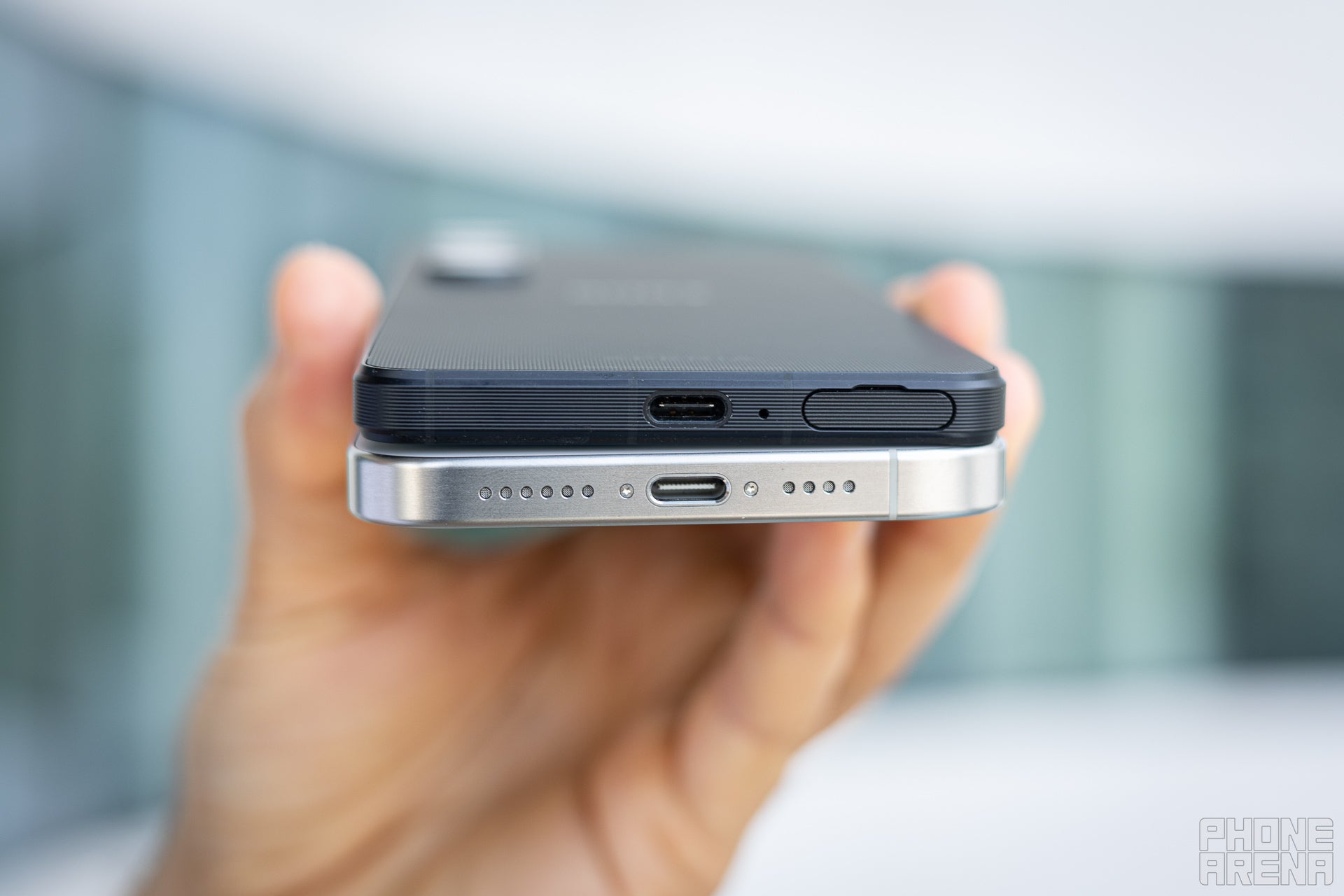
You can do wonders with a 5,000mAh battery and a FHD screen (Image by PhoneArena)
Sony milked the resolution downgrade of the Xperia 1 VI to the max. Fewer pixels to push results in longer battery life. This is also fortified by the dynamic refresh rate. Even though the Xperia 1 VI features the same 5,000mAh battery capacity as its predecessor, Sony now advertises the phone as a "two-day smartphone."
The iPhone 15 Pro Max comes with a slightly smaller battery, but it can also stretch its legs to cover two days, especially if you're not pushing it to the limit all the time. Looking at the battery test results below, it's clear to see that Sony did a good job with the screen downgrade. However, the iPhone manages to squeeze just enough juice to be competitive without sacrificing pixel density. The gaming test goes to the Xperia phone, hands down, though.
The iPhone 15 Pro Max comes with a slightly smaller battery, but it can also stretch its legs to cover two days, especially if you're not pushing it to the limit all the time. Looking at the battery test results below, it's clear to see that Sony did a good job with the screen downgrade. However, the iPhone manages to squeeze just enough juice to be competitive without sacrificing pixel density. The gaming test goes to the Xperia phone, hands down, though.
PhoneArena Battery Test Results:
Specs Comparison
Here's a quick overview of the specs of both phones. You can check out the detailed Xperia 1 VI vs iPhone 15 Pro Max specs comparison on PhoneArena for more information.
| Xperia 1 VI | iPhone 15 Pro Max | |
|---|---|---|
| Size, weight | 162 x 74 x 8.2 mm, 192 grams | 159.9 x 76.7 x 8.3 mm, 221 grams |
| Screen | 6.5" OLED 1-120Hz LTPO FHD+ (1080x2340), 396 PPI | 6.7" OLED 1-120Hz ProMotion |
| Processor | Snapdragon 8 Gen 3 Vapor Chamber 4nm | A17 Bionic 3nm |
| RAM, Storage | 12/256GB 12/512GB microSD card (1024GB) | 8/128GB 8/256GB 8/512GB 8/1TB LPDDR5 |
| Cameras | 48MP main 12MP ultra 12MP 3.5x-5.2 zoom (85mm-170mm continuous) 12MP front | 48MP main 12MP ultra 12MP 5X-6X zoom 12MP front |
| Battery | 5,000 mAh | 4323 mAh |
| Charging | USB-C 30W wired Wireless charging | USB-C 27W wired MagSafe |
Summary

Which one should you get? (Image by PhoneArena)
Which one should you get? Who wins the fight? Very, very difficult questions. The Xperia 1 VI clearly aims to attract a new audience with its more mainstream aspect ratio and simplified camera controls. The price, however, is still a hard pill to swallow. At $1,399, this phone is more expensive than its rival, and it also lacks long-term software support. And furthermore, it's more expensive than the successor, the iPhone 16 Pro Max, which most people will inevitably prefer.
The iPhone 15 Pro Max is a known entity and a safe choice for all iPhone enthusiasts and a great deal if they want to save some money and not opt for the latest and greatest iPhone 16 series. Most importantly, it can do most of the things the Sony can, barring the continuous zoom. The Pro Max also comes without a microSD card slot and 3.5mm audio jack, but are these really important nowadays when you can get a 1TB phone and there's a huge choice of Bluetooth earbuds?
For those of you who would like to dip their toes in Sony's phone ocean, so to speak, the Xperia 1 VI is the perfect entry point, thanks to the new aspect ratio that's much more familiar and close to other flagship phones. On the other hand, if you're coming from an older Xperia phone and want to switch, the iPhone could offer more bang for the buck.
The iPhone 15 Pro Max is a known entity and a safe choice for all iPhone enthusiasts and a great deal if they want to save some money and not opt for the latest and greatest iPhone 16 series. Most importantly, it can do most of the things the Sony can, barring the continuous zoom. The Pro Max also comes without a microSD card slot and 3.5mm audio jack, but are these really important nowadays when you can get a 1TB phone and there's a huge choice of Bluetooth earbuds?
For those of you who would like to dip their toes in Sony's phone ocean, so to speak, the Xperia 1 VI is the perfect entry point, thanks to the new aspect ratio that's much more familiar and close to other flagship phones. On the other hand, if you're coming from an older Xperia phone and want to switch, the iPhone could offer more bang for the buck.
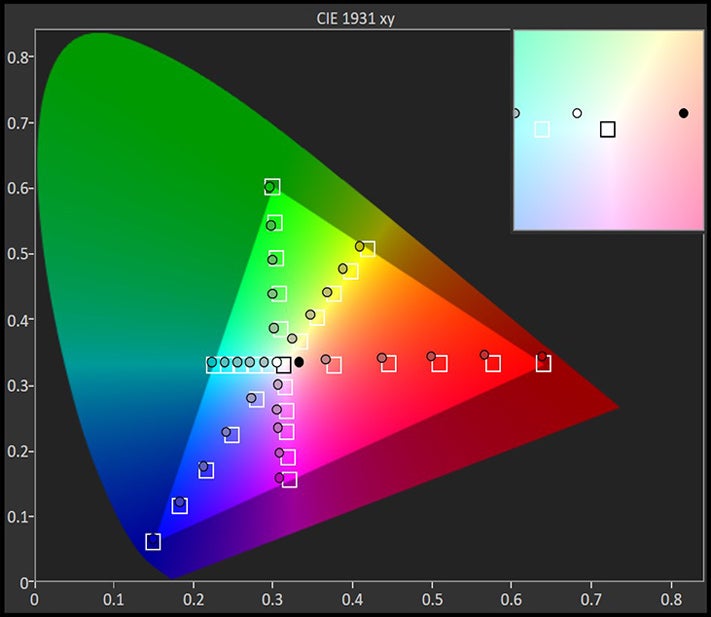










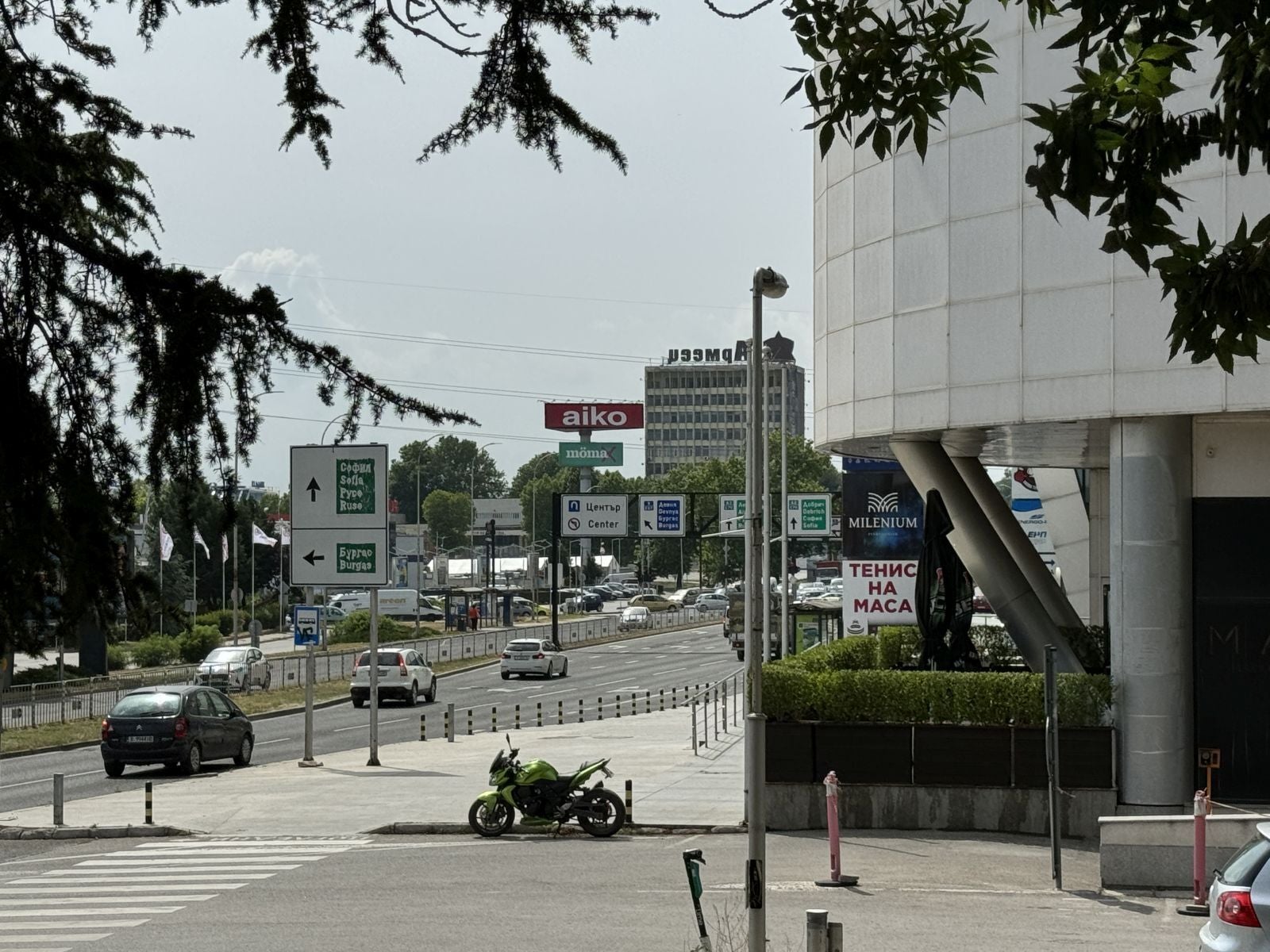









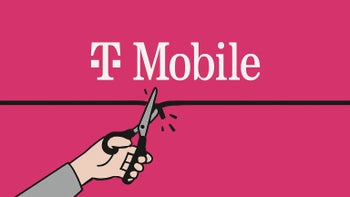
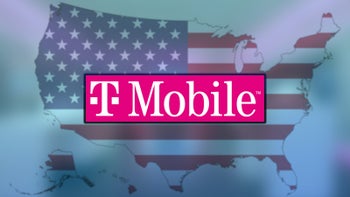
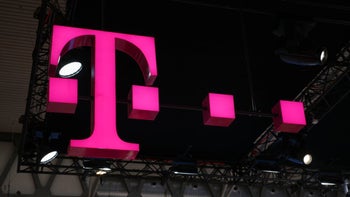


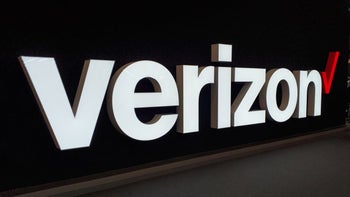
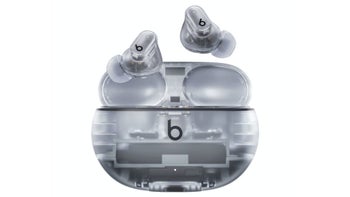
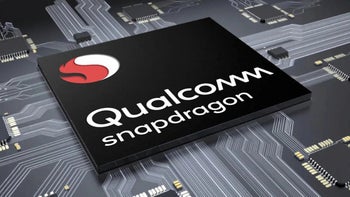

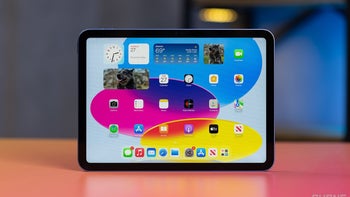
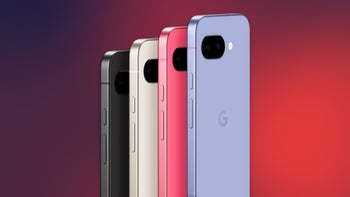
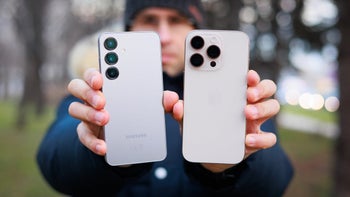






Things that are NOT allowed: